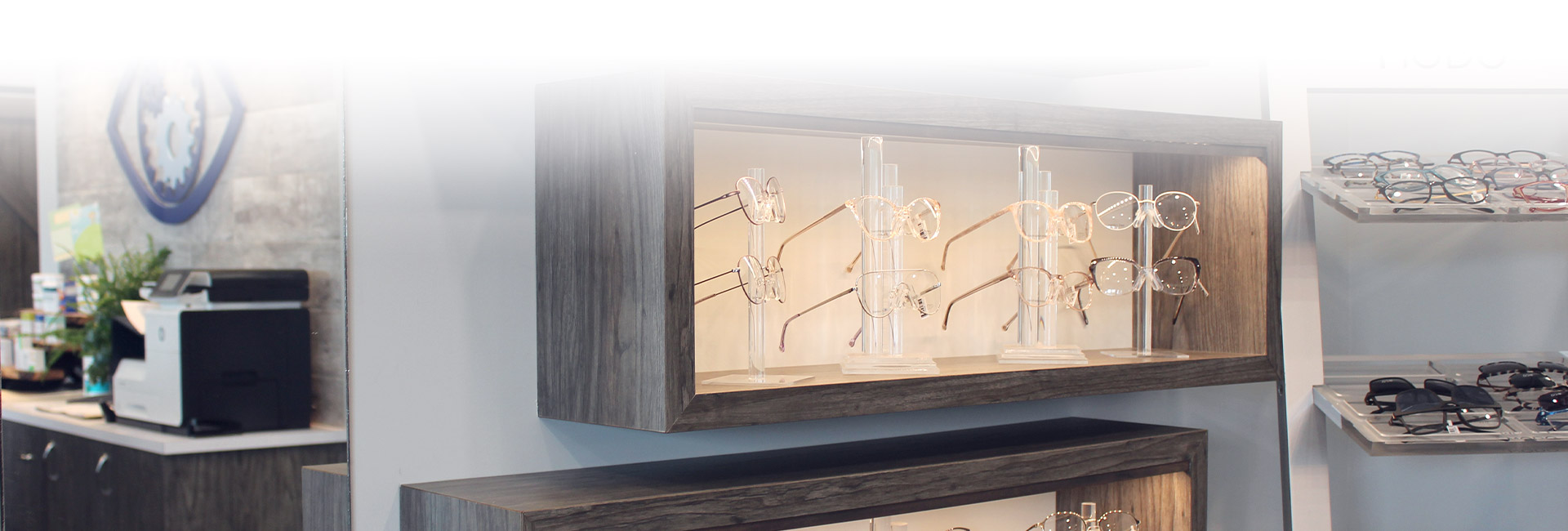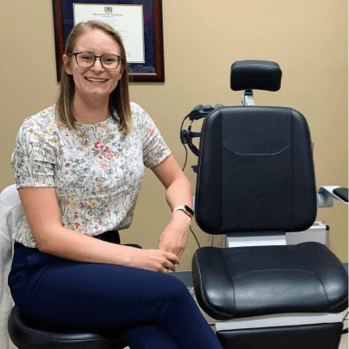Migraines can be debilitating and significantly impact daily life. If you suffer from migraines, you’ve probably tried everything to find relief. However, a surprising solution to frequent migraines could be migraine and headache glasses—or tinted lenses.
While bright or flashing lights can induce migraines, most people don’t think to treat them with eye care. Fortunately, promising research is emerging about migraine glasses that might make you think twice.
The Basics of How Migraine Glasses Work
Migraine glasses are specially designed eyewear that help reduce light sensitivity, a common trigger for migraines. They usually feature lenses that filter out specific wavelengths of light (like blue or green light), reducing the strain on your eyes and, consequently, the frequency and severity of migraines. By filtering out these harmful wavelengths, migraine glasses help create a more comfortable visual environment, allowing you to go about your day with fewer interruptions.
Research has shown that wearing migraine glasses can significantly reduce the impact of light-induced migraines. One study found that participants experienced a 74% reduction in migraine attacks when using these specialized glasses.
However, it is important to note migraine glasses are not a complete cure for migraines. However, they can offer some relief.
Types of Migraine Glasses
Different types of migraine glasses are designed to address various triggers and preferences. Some of the most common types include:
- FL-41 Lenses are rose-tinted lenses that filter out blue and green light. They are specifically designed for people with light sensitivity and have been shown to reduce the frequency of migraine attacks
- Blue Light Blocking Lenses are designed to filter out blue light emitted by digital screens, which can trigger migraines or worsen existing symptoms. They are ideal for those who spend much time in front of computers, smartphones, or tablets
- Polarized Sunglasses help reduce overall eye strain and light sensitivity from reflective surfaces like water, snow, and glass
It’s also possible for these lenses to be personalized to your prescription if you currently wear glasses or have another eye condition you’d like to be treated with glasses. Each type of migraine glasses offers unique benefits, so choosing the one that best fits your lifestyle and specific migraine triggers is essential. A trusted optometrist can help you weigh the pros and cons of each type to find the best fit for you.
What Colour Lens is Best for Migraines?
The colour of the lens in your migraine glasses can make a significant difference, but figuring out what options there are can be overwhelming–especially when great brands like HOYA offer dozens of colour options. Some popular lens colours include:
- Rose-tinted lenses, like those found in FL-41 glasses, are highly effective at filtering out both blue and green light.
- Omega & Violet lenses are designed to combat light sensitivity and reduce light-induced migraines, making them ideal for fluorescent lighting and screens.
- Grey lenses are often used in polarized sunglasses to reduce glare from reflective surfaces, which can reduce overall light sensitivity and eye strain.
How Often Should You Wear Migraine Glasses?
The frequency with which you should wear migraine glasses depends on your migraine frequency, specific triggers, and daily activities.
Migraine triggers can include stress, sleep deprivation, smoking, dehydration, alcohol use, and diet – none of which a pair of glasses will help with. However, migraine glasses can significantly improve your experience in activities involving bright or harsh lighting (such as prolonged screen exposure, working in well-lit environments or under fluorescent lighting, or being outdoors on sunny days).
Some people find that wearing migraine glasses throughout the day offers the best protection against unexpected triggers. Daily use might be beneficial if you work in an environment with consistent bright lighting or spend a lot of time outdoors.
Experiment with different scenarios to determine what works best for you.

Other Ways to Deal with Migraines
While migraine glasses can be beneficial, they are just one piece of the puzzle. Here are some additional strategies to help manage your migraines:
Maintain a Migraine Diary
Keeping a diary of your migraine episodes can help identify triggers and patterns. Note the time, date, duration, and potential triggers leading to each migraine. This information can help tailor a treatment plan with a professional.
Stay Hydrated
Dehydration is a common migraine trigger. To stay hydrated, ensure you’re drinking enough water throughout the day. Aim for at least eight 8-ounce glasses of water daily, and more if you’re active or in a hot climate.
Practice Stress Management
Stress is another significant trigger for migraines. Incorporate stress-reducing activities into your daily routine, such as meditation, yoga, or deep breathing exercises. Finding ways to manage stress can help reduce the frequency and severity of your migraines.
Get Regular Exercise
Regular physical activity can help reduce migraine frequency and intensity. Aim for at least 30 minutes of moderate exercise most days of the week. Activities like walking, swimming, or cycling can be particularly beneficial.
Consult a Healthcare Professional
If your migraines are severe or frequent, it’s essential to consult with a healthcare professional. They can help you develop a comprehensive treatment plan, including medication, lifestyle changes, and other therapies.
Combining these strategies with migraine glasses can create a holistic approach to managing your migraines and improving your quality of life. Beyond 20/20 Optometry understands the value of offering a holistic approach to eye care and how caring for your vision can help your quality of life. Contact us today to see how we can help you better manage your migraine stress.




